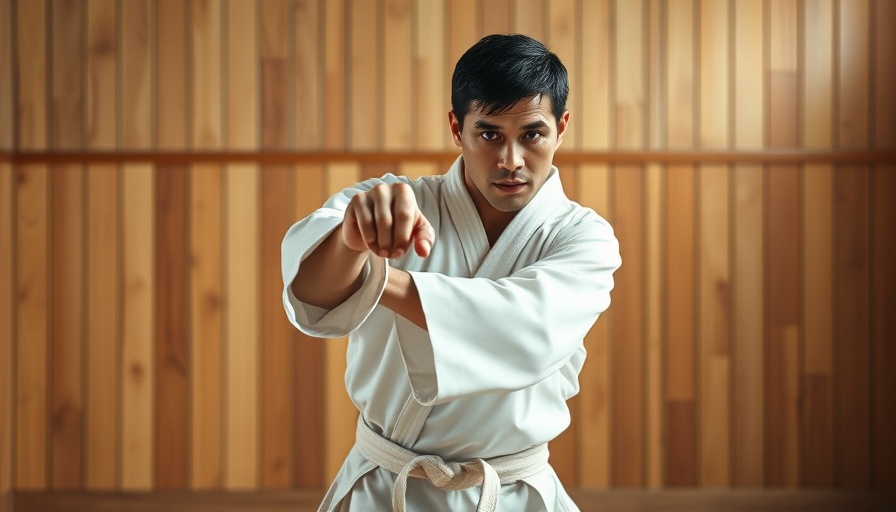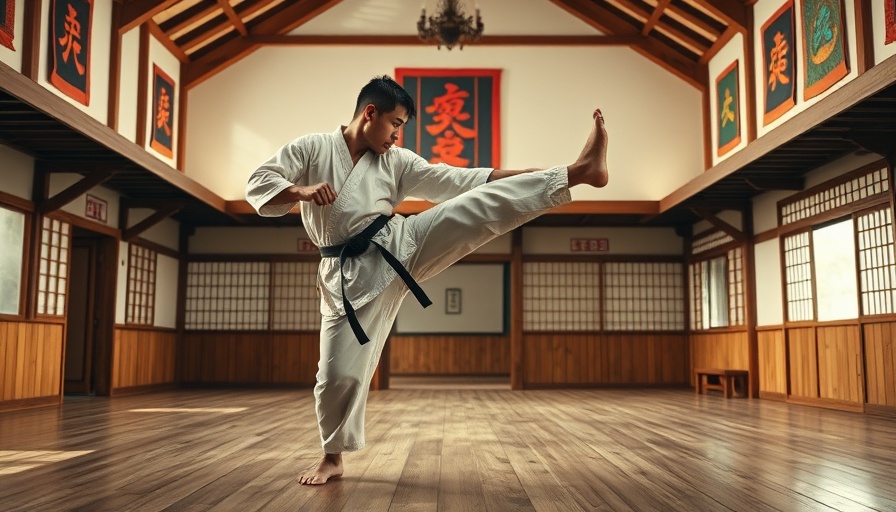
Unlocking the Power of Strength and Weakness in Karate
In the art of Karate, it’s essential to balance strength and weakness. Practitioners often focus solely on the physical aspects of training—techniques like block and punch—but overlooking the subtleties of powerful transitions can hinder advancement. As André Bertel emphasizes in his training regimen, understanding the nuances of 'strength in weakness' can lead to powerful techniques, enhancing skill in places unexpected.
The Importance of Kihon and Kata in Your Practice
The training described in the recent session highlights the necessity of kihon (basics) and kata (forms). Each kata serves as a capsule of knowledge containing foundational movements that help in embodying the principles of karate. Practitioners often find that revisiting these fundamental techniques unveils insights into their application in real-world scenarios. In particular, focusing on techniques such as Hidari teisho age-zuki and combinations of kicking techniques like Mae-geri keage can elevate one’s skills dramatically.
Enhancing Your Keriwaza: Integrating Advanced Techniques
During kihon training, emphasis was placed on KERIWAZA, the kicking techniques that are pivotal to Shotokan Karate. The use of the Ransetsu kata, a nuanced and intricate practice, enables students to understand the demands of each kick including the Mikazuki-geri and Yoko-geri kekomi. As you train, consider diversifying your knowledge by integrating advanced karate techniques into your daily practice. Such incorporation not only cultivates mastery but also deepens the understanding of balance and timing essential for successful execution during kumite (sparring).
Connecting Mindfulness and Physical Training
As practitioners, there’s an invaluable connection between the mindset and physical training. Engaging in mindfulness while practicing helps elevate your focus, allowing you to achieve clarity in execution. For a deeper understanding of movements, concentrate on each technique's transitions through breathwork and meditation before and after training sessions. The physical act of karate becomes a mindful practice, fostering growth not only in skill but in personal well-being.
Practical Tips for Integrating Karate Training into Daily Life
Every karateka should aim to make martial arts a lifestyle. Here are some actionable insights to cultivate this integration:
Frequent Training: Allocate dedicated time for practice, reinforcing technique and fitness.
Cross-Training: Engage in complementary exercises such as fitness classes or additional martial arts disciplines, which can improve flexibility and strength.
Community Engagement: Finding support in a dojo environment enhances motivation, which, in turn, fosters discipline and strengthens mental resilience.
Build Your Character Through Karate
Karate teaches more than punches and kicks; it builds character. As you train, reflect on how your practices contribute to your personal development. Whether you are a beginner or an advanced practitioner, use the principles of Budo to guide your path. Consider how the virtues of respect, patience, and determination manifest in your training and beyond.
In conclusion, karate is not just a sport; it is a holistic practice that encourages personal growth and mental clarity. For those in Gurnee, IL eager to deepen their karate experience, consider training at Gruber’s Karate—renowned for their commitment to elite Shotokan training.
Train With The Best At Gruber’s Karate, Gurnee’s 5-Star Dojo For Kids, Teens & Adults!
Email: Sensei@gruberskarate.com
Address: Gruber's Karate, 5725 Stearns School Rd, Gurnee, IL 60031
Phone: (224) 347-6655
 Add Row
Add Row  Add
Add 








Write A Comment